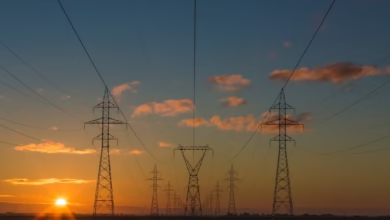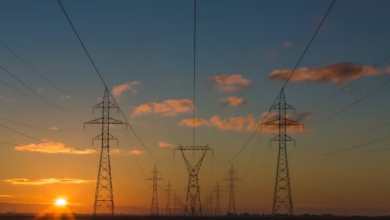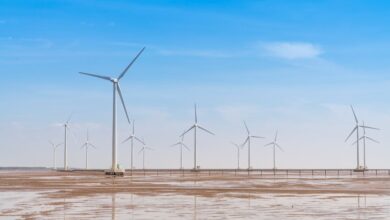Transforming Energy: How Renewable Solutions and Innovations Combat Climate Change in a Shifting Global Landscape

The escalating threat of climate change poses one of the most significant challenges of our time, prompting urgent discussions about the role of energy in mitigating global warming. As we continue to grapple with the consequences of fossil fuel consumption, the shift towards renewable energy sources has emerged as a pivotal strategy in combating climate change. This article explores the multifaceted relationship between energy systems and climate action, delving into the transition from traditional fossil fuels to sustainable alternatives such as solar power, wind energy, and hydropower. Additionally, we will examine how energy efficiency and innovation serve as key drivers in this transition, enhancing our ability to utilize energy resources responsibly. Furthermore, navigating the complex landscape of energy markets and understanding the implications of energy policy and investment are crucial for fostering a resilient energy future. Join us as we unpack the critical role of various energy sources—including nuclear energy, bioenergy, and hydrogen energy—in shaping a sustainable world and advancing global energy trends toward a greener, more secure future.
- 1. The Shift Towards Renewable Energy: Strategies for Combating Climate Change
- 2. Energy Efficiency and Innovation: Key Drivers in the Energy Transition
- 3. Navigating Energy Markets: The Role of Policy and Investment in Global Energy Trends
1. The Shift Towards Renewable Energy: Strategies for Combating Climate Change
The global shift towards renewable energy is a critical component in the fight against climate change. As the world grapples with rising temperatures and environmental degradation, countries are increasingly recognizing that transitioning from fossil fuels to green energy sources is essential for sustainable development. This transition encompasses a variety of strategies aimed at enhancing energy efficiency, promoting energy security, and reducing greenhouse gas emissions.
One of the primary strategies for combating climate change is the investment in renewable energy technologies such as solar power, wind energy, hydropower, and bioenergy. These sources not only provide cleaner alternatives to fossil fuels but also contribute to energy diversification in the global energy markets. For instance, solar and wind energy are becoming more economically viable due to advancements in energy R&D and the decreasing costs of technology, making them attractive options for energy investment.
Energy storage solutions are also vital in this transition. As renewable energy sources can be intermittent, effective energy storage systems, such as batteries and thermal energy storage, help manage supply and demand, ensuring a stable energy supply. Smart grids play a crucial role here by optimizing energy distribution and integrating various energy sources, including distributed energy systems that allow for localized power generation.
Nuclear energy emerges as another significant player in this energy transition. It offers a low-carbon alternative to fossil fuels, providing substantial baseload power to complement renewable sources. However, public concerns about safety and waste management remain challenges that require innovative solutions, such as advanced reactor designs and carbon capture technologies.
Furthermore, policies promoting energy efficiency can significantly reduce overall energy consumption, thereby lowering carbon emissions. Governments are increasingly implementing energy policies that incentivize the adoption of electric vehicles and energy-efficient appliances, contributing to a more sustainable energy landscape.
As countries strive to meet their climate goals, they must also consider energy imports and exports. By fostering international cooperation and trade in renewable technologies, nations can enhance their energy security and create a more resilient global energy economy. The development of offshore energy resources, particularly offshore wind farms, provides additional opportunities for energy innovation and economic growth.
In summary, the shift towards renewable energy is a multifaceted approach to combating climate change. By embracing energy efficiency, investing in new technologies, and reforming energy policies, we can pave the way for a sustainable energy future that not only mitigates climate change but also promotes economic stability and energy security for generations to come.
2. Energy Efficiency and Innovation: Key Drivers in the Energy Transition
Energy efficiency and innovation are crucial elements in the transition towards a sustainable energy landscape, essential for combating climate change. As global energy trends shift from reliance on fossil fuels to cleaner alternatives, enhancing energy efficiency becomes a priority. By optimizing energy use across various sectors, we can significantly reduce greenhouse gas emissions while maintaining economic growth and energy security.
One of the most promising avenues for enhancing energy efficiency lies in the adoption of advanced technologies. This includes the implementation of smart grids, which facilitate better energy management and distribution. Smart grids enable the integration of renewable energy sources, such as solar power and wind energy, into the existing infrastructure, improving overall energy efficiency. Furthermore, these systems can enhance energy storage capabilities, allowing for more reliable energy supply even when renewable sources are intermittent.
Innovations in energy technologies also play a pivotal role in the energy transition. For instance, the development of hydrogen energy and bioenergy can provide cleaner alternatives to traditional fossil fuels. Hydrogen, when produced from renewable sources, can serve as a versatile energy carrier, supporting various applications, including transportation via electric vehicles. Similarly, enhancing hydropower and offshore energy projects can contribute to a more diversified and resilient energy market.
Energy R&D is vital for driving these innovations forward. Investments in research and development not only foster technological breakthroughs but also promote energy efficiency across industries. For example, carbon capture technologies can help mitigate emissions from thermal energy production, while distributed energy systems empower consumers to generate their own power, further reducing reliance on centralized fossil fuel sources.
Incorporating energy policy that prioritizes energy efficiency and innovation is essential for facilitating this transition. Policymakers must create frameworks that support clean energy investments and incentivize the adoption of green energy solutions. By fostering a supportive environment for energy innovations, we can accelerate the shift toward a low-carbon economy, ultimately helping to mitigate the effects of climate change.
In summary, energy efficiency and innovation are key drivers in the energy transition, enabling us to move away from fossil fuels and towards a more sustainable energy future. By focusing on these aspects, we can create a resilient energy system that not only addresses climate change but also enhances energy security and economic stability.
3. Navigating Energy Markets: The Role of Policy and Investment in Global Energy Trends
Navigating the complexities of energy markets is crucial to understanding how policy and investment can significantly influence global energy trends. As the world grapples with climate change, the transition from fossil fuels to renewable energy sources becomes more imperative. Energy policies play a pivotal role in shaping this transition by setting the regulatory framework that encourages or discourages certain energy investments.
Governments worldwide are increasingly focusing on energy efficiency and clean energy technologies to reduce greenhouse gas emissions. Policies promoting renewable energy, such as solar power and wind energy, facilitate the growth of a diversified energy portfolio that enhances energy security. Investments in energy storage technologies, such as batteries and thermal energy systems, are essential to manage the intermittency of renewable sources. This not only improves grid reliability but also supports the integration of electric vehicles into the energy ecosystem.
Moreover, the role of nuclear energy cannot be overlooked in the fight against global warming. As a low-carbon energy source, nuclear energy provides a stable supply of power that complements variable renewable energy sources. Investment in carbon capture technologies also presents a viable pathway to mitigate emissions from fossil fuel use, allowing for a more gradual transition while maintaining energy supply.
The rise of smart grids and distributed energy systems is revolutionizing energy markets by enabling more efficient energy transportation and consumption. These innovations allow for better management of energy demand and supply, facilitating the incorporation of offshore energy and hydropower into the energy mix. Countries that prioritize energy R&D will likely lead the charge in developing cutting-edge solutions such as hydrogen energy and bioenergy, further diversifying their energy exports and imports.
In conclusion, navigating energy markets through informed energy policies and strategic investments is vital for addressing climate change. By fostering innovation and supporting the energy transition, nations can enhance their energy security while contributing to global efforts to combat global warming. The collective embrace of renewable energy, energy efficiency, and advanced technologies will shape the future landscape of energy economics and ensure a sustainable energy future.
In conclusion, the role of energy in combating climate change is more critical than ever as we navigate the complex landscape of global energy trends. The shift towards renewable energy sources, such as solar power, wind energy, and hydropower, is essential for reducing our reliance on fossil fuels and mitigating the effects of climate change. By prioritizing energy efficiency and fostering innovations in energy storage and smart grids, we can enhance energy security and create a more sustainable future.
Moreover, navigating energy markets through effective energy policy and strategic investments will drive the energy transition forward, ensuring that we harness the full potential of green energy, including bioenergy and hydrogen energy. As we continue to explore solutions like carbon capture and distributed energy systems, it is crucial to recognize the interconnectedness of energy economics and climate strategies.
Ultimately, the collective efforts of governments, businesses, and individuals in advancing energy R&D and promoting electric vehicles will pave the way for a resilient and sustainable energy landscape. By embracing these strategies, we can not only address the urgent challenges posed by climate change but also secure a cleaner, greener, and more equitable future for generations to come.





